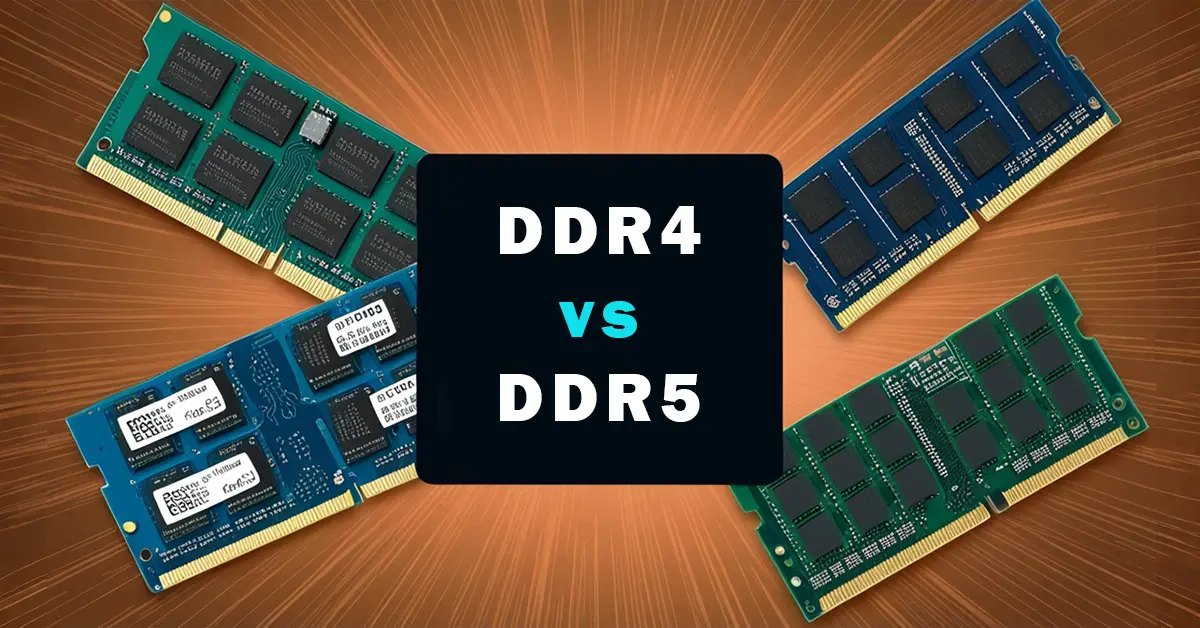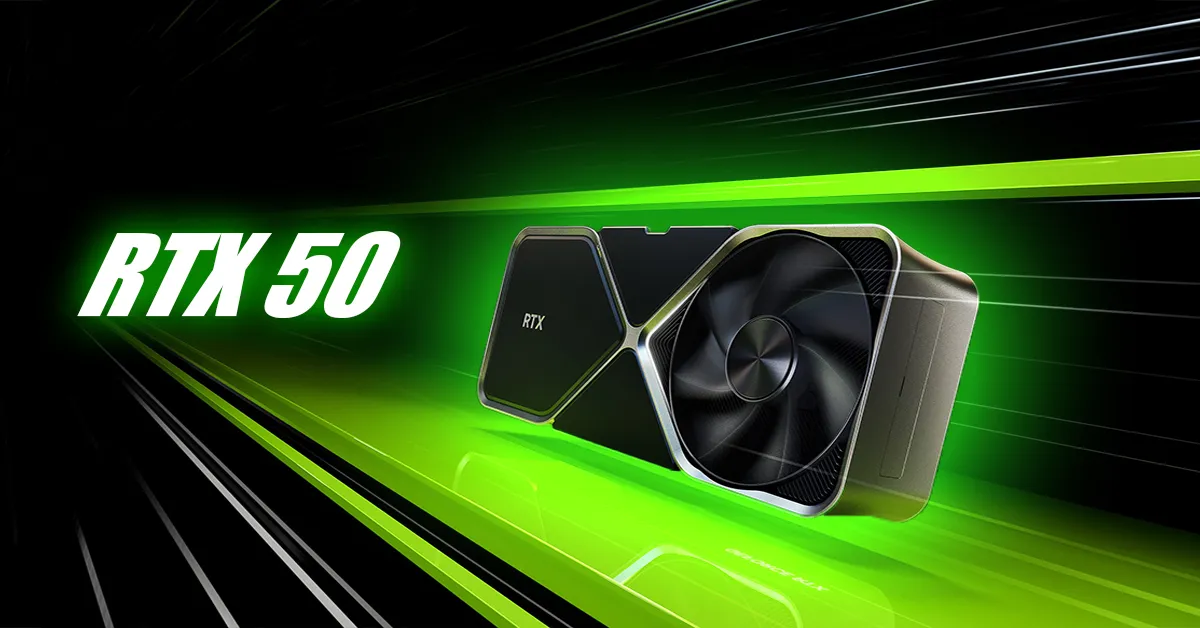Table of Contents
When it comes to building a PC, memory is one of those critical components that can make or break your rig’s performance. You’ve probably heard the buzz around DDR5, the latest in memory technology, but does that mean DDR4 is out of the picture? Not so fast! Let’s dive into the world of DDR5 vs DDR4 and figure out which one you should be slotting into your next PC build.
What Exactly is DDR Memory?
Before we get into the nitty-gritty, let’s take a quick stroll down memory lane. DDR stands for Double Data Rate, a type of RAM (Random Access Memory) that has been powering our computers for years. This memory type is crucial for your system’s performance, acting as a high-speed bridge between your CPU and the data it needs to access.
DDR4: The Veteran of the Memory World
DDR4 has been around since 2014 and has become the go-to memory for most PC builders. It’s reliable, fast, and has had years of refinement. But, like all good things, its time as the king of memory might be coming to an end.
Key Features of DDR4
- Speed: DDR4 typically runs at speeds between 2133 MHz to 3600 MHz, though you can find some kits that push even higher.
- Latency: Lower latencies make DDR4 snappy, perfect for gaming and productivity tasks.
- Power Consumption: DDR4 runs at 1.2V, which is pretty power-efficient.
- Availability and Cost: DDR4 is widely available and relatively affordable, making it an easy choice for many builders.
DDR5: The New Kid on the Block
Enter DDR5, the next generation of memory that promises to take your PC’s performance to new heights. It’s faster, more efficient, and packed with new features. But with great power comes a steeper price tag and some growing pains.
Key Features of DDR5
- Speed: DDR5 starts at 4800 MHz and can go beyond 7000 MHz, offering mind-blowing performance.
- Bandwidth: Twice the bandwidth of DDR4, meaning it can handle more data simultaneously.
- Power Efficiency: Despite the higher speeds, DDR5 operates at 1.1V, making it slightly more power-efficient.
- Capacity: DDR5 modules come with higher capacities, allowing for more memory in your system.
- ECC (Error-Correcting Code): DDR5 supports on-die ECC, improving stability and reliability.
Performance Showdown: DDR5 vs DDR4
Alright, let’s cut to the chase. How do DDR5 and DDR4 stack up against each other in real-world performance?
Gaming Performance
For gamers, memory speed and latency can have a noticeable impact on performance. DDR4 has been the go-to for years, but DDR5 brings some serious firepower to the table.
FPS Gains
In terms of frames per second (FPS), DDR5 offers marginal improvements over DDR4 in most games. The higher bandwidth can help in games that are memory-intensive, but for many titles, the difference might not be earth-shattering.
Future-Proofing
One of DDR5’s biggest selling points is future-proofing. As games and software continue to evolve, they’ll likely start taking advantage of the increased bandwidth and speeds DDR5 offers.
Productivity and Content Creation
If you’re into video editing, 3D rendering, or any other heavy-duty content creation, DDR5 could be a game-changer. The extra bandwidth and higher capacities mean faster render times and smoother multitasking.
Rendering and Encoding
When it comes to rendering and encoding tasks, DDR5 can significantly reduce the time it takes to get the job done. The higher speeds and increased bandwidth allow your CPU to access the data it needs more quickly, leading to faster results.
Power Efficiency
If you’re building a PC with energy efficiency in mind, DDR5’s slightly lower voltage (1.1V vs. 1.2V) might seem appealing. However, the difference is minimal in most scenarios, so don’t expect massive power savings.
Compatibility Considerations
Now, before you go all-in on DDR5, you need to consider whether your current or planned build will even support it.
Motherboard Compatibility
DDR5 requires a motherboard with a compatible chipset. Currently, only the latest platforms like Intel’s Alder Lake and AMD’s AM5 support DDR5, so if you’re rocking an older motherboard, you’ll need to upgrade.
CPU Compatibility
Just like with motherboards, your CPU needs to support DDR5. The newest CPUs from Intel and AMD are designed with DDR5 in mind, but older CPUs are stuck with DDR4.
Cost Analysis: Is DDR5 Worth the Price?
Let’s talk about the elephant in the room: cost. DDR5 is expensive. There’s no sugar-coating it. But is it worth the extra money?
Price of DDR5 vs DDR4
As of now, DDR5 is significantly more expensive than DDR4. Prices have been coming down as more manufacturers ramp up production, but DDR4 remains the more budget-friendly option.
Memory Kits
For the price of a mid-range DDR5 kit, you can snag a high-end DDR4 kit with faster speeds and better latencies. If you’re on a budget, DDR4 might be the smarter choice for now.
Long-Term Investment
If you’re building a PC that you plan to keep for several years, investing in DDR5 could pay off in the long run. As more software and games take advantage of DDR5’s capabilities, the performance gap between DDR4 and DDR5 will likely widen.
Ease of Installation: DDR5 vs DDR4
Installing RAM is usually a straightforward process, but are there any differences between DDR5 and DDR4?
Physical Installation
Both DDR5 and DDR4 modules look similar, but they have different pin configurations, meaning you can’t accidentally install DDR5 into a DDR4 slot (or vice versa). The installation process itself is the same: align the notches, apply gentle pressure, and click it into place.
Overclocking Potential
If you’re into squeezing every bit of performance out of your system, overclocking is something to consider. DDR4 has had years of refinement, and many kits overclock like a dream. DDR5, being newer, still has some quirks, but it’s showing promise with impressive overclocking potential.
Real-World Use Cases: Who Should Choose DDR4?
Casual Gamers and General Users
If you’re a casual gamer or someone who uses their PC for general tasks like browsing, streaming, and light productivity, DDR4 is more than sufficient. It’s tried and true, and the performance difference compared to DDR5 in these scenarios is negligible.
Budget-Conscious Builders
For those on a budget, DDR4 is the clear winner. It’s cheaper, widely available, and still offers excellent performance for most tasks. You can allocate the money you save on RAM to other components like a better GPU or a faster SSD.
Real-World Use Cases: Who Should Choose DDR5?
Enthusiasts and Hardcore Gamers
If you’re an enthusiast who demands the best performance or a hardcore gamer looking to future-proof your rig, DDR5 is the way to go. The extra speed and bandwidth will help you stay ahead of the curve as games and applications become more demanding.
Content Creators and Professionals
For professionals in content creation, 3D rendering, and other demanding fields, DDR5 can provide the performance boost needed to handle large files and complex tasks more efficiently. The increased capacity and speed can make a significant difference in your workflow.
The Verdict: Which Memory Should You Choose?
So, after all that, which one should you go for? It depends on your needs, budget, and future plans.
For Most Users: DDR4
DDR4 remains a solid choice for most users. It’s affordable, reliable, and offers more than enough performance for gaming, productivity, and general use.
For Enthusiasts and Professionals: DDR5
If you’re building a high-end rig or need the extra power for professional tasks, DDR5 is worth considering. The future-proofing and performance gains, especially in memory-intensive applications, make it a compelling option.
Conclusion
At the end of the day, both DDR4 and DDR5 have their strengths. DDR4 is the seasoned veteran, offering excellent performance at an affordable price. DDR5, on the other hand, is the cutting-edge newcomer, bringing next-gen speeds and capabilities. Your choice should depend on your specific needs, budget, and whether you’re looking to future-proof your system.
FAQs
Can I use DDR4 and DDR5 together in my PC?
No, DDR4 and DDR5 are not compatible with each other. You need to choose one type based on your motherboard and CPU compatibility.
Is DDR5 worth the upgrade from DDR4?
It depends on your use case. If you need the extra performance for gaming or professional tasks, DDR5 is worth considering. For most general users, DDR4 is still a great choice.
Will DDR4 become obsolete soon?
DDR4 will eventually be phased out, but it will still be relevant for several years. Software and games will continue to support DDR4 for the foreseeable future.
How much RAM do I need for gaming in 2024?
16GB of RAM is the sweet spot for most gaming setups in 2024. If you’re doing heavy multitasking or content creation,
32GB or more might be beneficial.
Is it better to invest in a faster CPU or faster RAM?
Generally, a faster CPU will have a more noticeable impact on overall system performance. However, faster RAM can enhance specific tasks and gaming performance, especially when paired with a high-end CPU.



